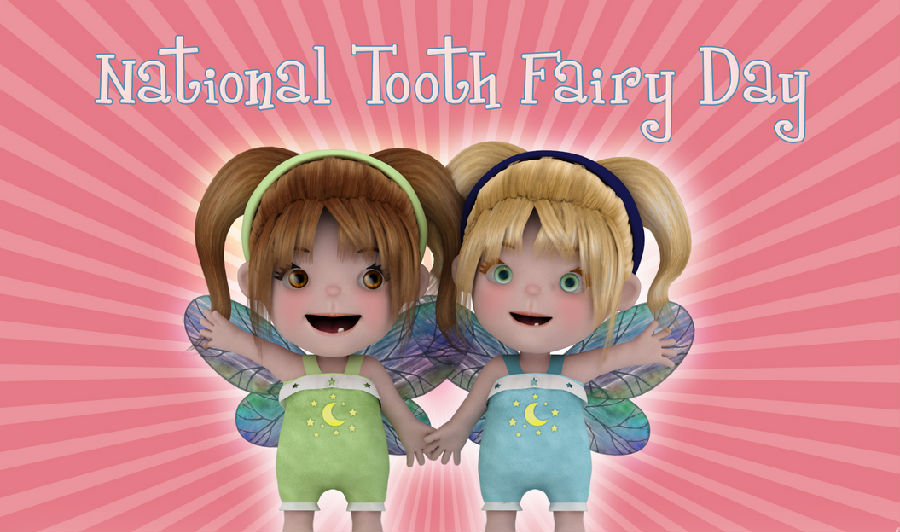February 28 is National Tooth Fairy Day. This day celebrates one of childhood’s make-believe visitors. Others include Santa Claus and the Easter Bunny. The Tooth Fairy comes in the middle of the night after a child loses a milk tooth. Parents tell the child to put the tooth under his or her pillow and in the morning they will find some money from the Tooth Fairy. Of course, in reality, parents sneak into the room and replace the tooth with the cash. This part of growing up makes children worry a little less about losing a tooth. They are more excited about the Tooth Fairy’s visit and how much money she’ll leave. National Tooth Fairy Day is also a good day to make sure children understand the importance of brushing their teeth regularly.
2月28日是全國牙仙日。這一天慶祝的是傳說中牙仙的到來。這些傳說人物還包括圣誕老人以及復活節兔子。乳牙脫落后,牙仙會在夜半來到。父母會告訴孩子將牙齒放在枕頭底下,早上,他們會收到牙仙給他們的錢。當然,事實情況是,父母會偷偷摸摸進入房間,用錢來換取牙齒。這會讓成長中的孩子減輕對掉牙所造成的擔心。他們對牙仙的到來以及給幾張鈔票興奮不已。全國牙仙日也能夠讓孩子了解按時刷牙的重要性。

No one knows the real origins of the Tooth Fairy. It started in Europe hundreds of years ago and spread around the world. There are different traditions in other countries for when a child’s tooth falls out. In Japan, children throw a lower baby tooth up onto the roof so the next tooth grows healthily upwards; an upper tooth goes under the house so the new adult tooth grows downwards. Korea and Vietnam have similar customs. In parts of India, children wrap their milk teeth in cotton and offer it to the sun. In many parts of Europe, a fairy mouse takes away the teeth. This may be because mice have strong teeth that never stop growing. What happens in your country when a child loses a tooth?
牙仙的真正起源人們不得而知。它開始于數百年的歐洲,并傳播到全世界。在其他國家,孩子掉牙時也有許多不同的風俗和傳統。在日本,孩子會把下齒的乳牙放到房頂上,這樣的話下顆牙將會長得結結實實;上齒牙會扔到地上,這讓孩子的上齒牙會往下健康地成長。韓國和越南也有著相似的習俗。在印度的部分地區,孩子們會用棉花將乳牙包裹起來,并奉獻給太陽。在許多歐洲地區,仙鼠會將牙齒帶走。這可能是因為老鼠有著一副永不停止生長的強壯牙齒。如果孩子掉牙,你的國家又會怎么辦呢?
譯文屬可可英語原創,未經允許,不得轉載。











